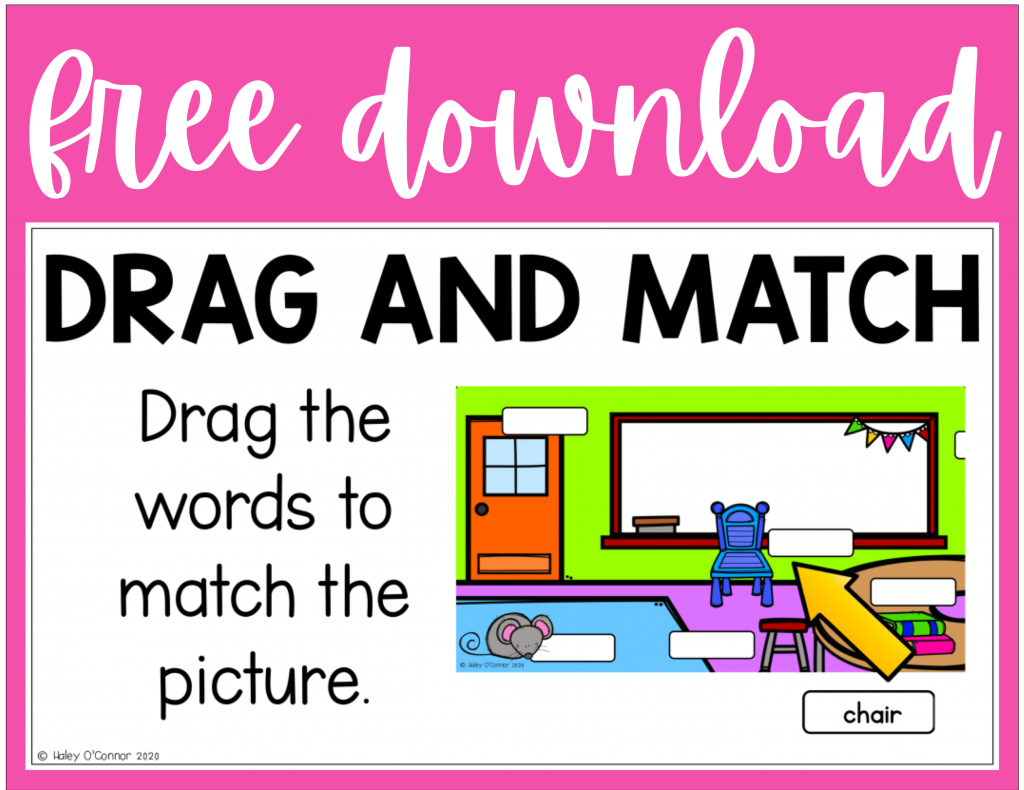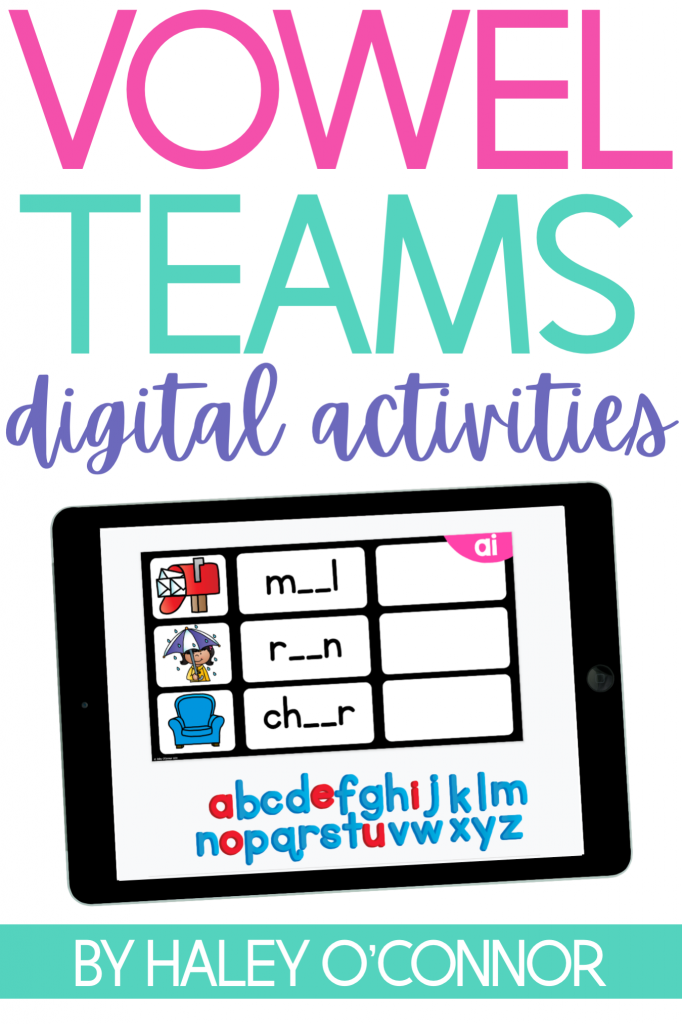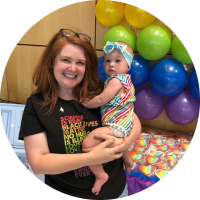Digital Activities for Vowel Teams and Diphthongs
This post contains affiliate links. That means I share a quick link for you on Amazon and I get a little referral fee. BUT they are always things I use frequently and believe in! This referral fee helps keep this website up and running and doesn’t cost you anything!
So sometime in the future you’ll be reading this blog post and you may not remember these days. These days of shelter in place. We’ve been staying at home for about 3 weeks now and it has started to feel normal. We desperately miss our friends but I am thankful for this blog and this amazing opportunity I have to help teachers, students and parents during this time. If you’re a parent, be sure to check out my blog series for families.
As we navigate this new normal together, I hope you’re finding the resources and tools you need. If you’re not, let me know. If I don’t have it, I can help you find it.
Today I wanted to talk about phonics. I’m going to put on my teacher AND my parent hat and I hope this information makes sense to whoever is reading it. Phonics is basically teaching the connection between letters and their sounds. It’s teaching our young readers what sounds letters make on their own and when grouped with other letters.
Phonics Progression
After students are comfortable with the alphabet (sometimes even before they are fluent with all 26 letters), they move on to “sounding it out.” They often try to sound words out and they use the first letter of words for most of their reading.
After some practice with beginning sounds and letters, you’ll see them start to sound some words out. Unfortunately, most words in English aren’t actually super simple to sound out. That’s why we focus on CVC words (consonant-vowel-consonant.) As students grow in their understanding of letters and their sounds, words get more sophisticated.
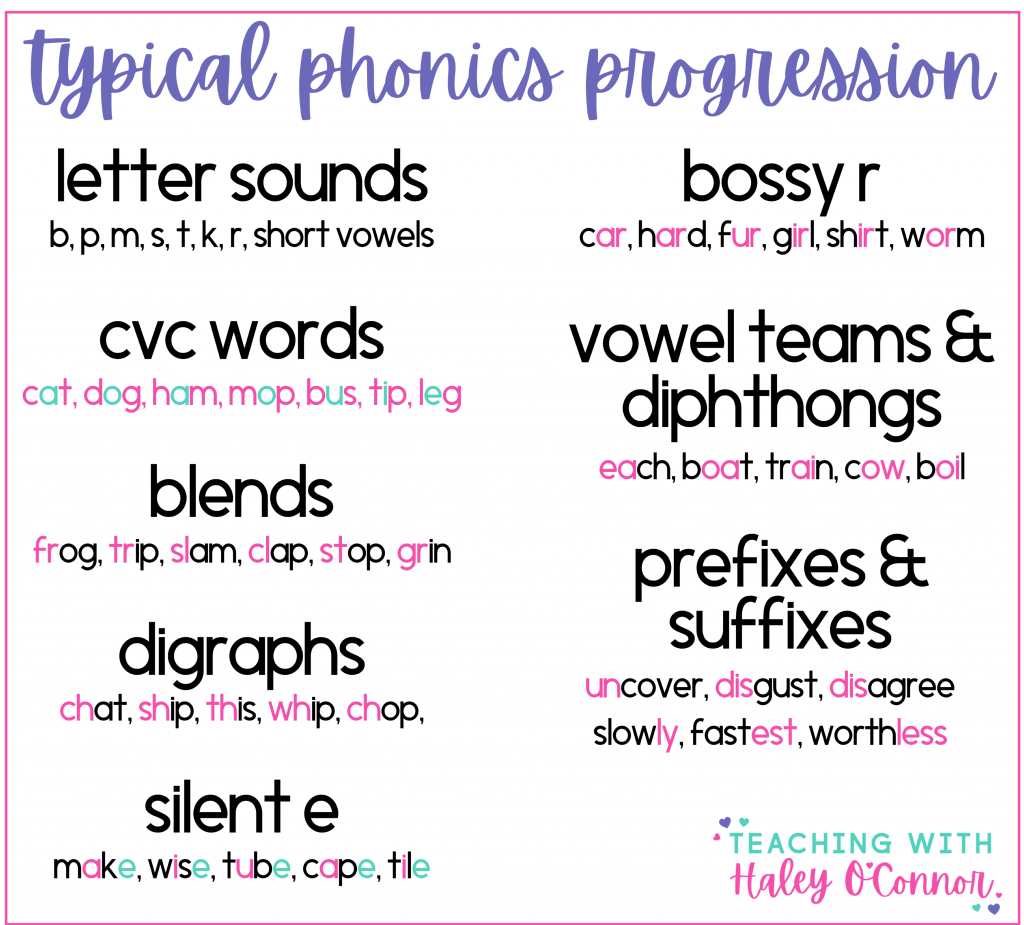
Phonics is helping students learn how letters and sounds work together. As we have learned more about how the brain works and students learn to read, we’ve come to understand how important it is that students use all their clues to solve new words. Phonics isn’t enough and readers must also learn to use context (like the picture and the surrounding information) and knowledge of the English language (how things should sound.) They also need a strong foundation of sight words (words that show up frequently and don’t follow patterns like could, are, have).
There is so much debate about how much time we should spend on each reading skill, but we know one thing…it is ALL important. Building a strong foundation for readers in phonics is so important and often forgotten. As I was working on my vowel teams resource, I shared with some parent friends. I was surprised (but not THAT much) that many of their kids hadn’t had any phonics instruction. So when they got to new words they tried to sound it out or use the picture/what the author meant but they didn’t have any understanding of how words work. That’s why I’m so proud of this resource and believe it is SO needed.
As you navigate teaching vowel teams at home or at school, I hope you’ll find activities that are engaging and help your kids interact with words in many different ways. Students need to see words in isolation (all by themselves) and within sentences. If you’re looking for printable resources, you will definitely want to check out this blog post. Today I want to share some digital resources your kids can use on a tablet or computer, as well as extensions for after the activity.
This resource can be used at home or at school! Because it is digital, it’s super easy to share with your students in Google Classroom. This is a great tutorial from my best friend, Jessica, at Elementary Nest. It’s also super easy to use if you are a parent and just working with your child at home! You don’t need any fancy school technology or a ton of teacher knowledge. You just need a bit of enthusiasm, a little patience, and the belief that with practice all kids can become great readers!
Instructional Videos
Before students are ready to read words with vowel teams and diphthongs on their own, they need a bit of teaching. For some students, they may have picked up on these patterns on their own. For others, this may be brand new information. These videos are great in both situations!
Before we dive in, I review the major vowels (a, e, i, o, u) as well as the sounds that w and y make. Then we dive right in! I divided all 18 vowel teams and diphthongs into 5 sections. Within each video, I share the vowel team as well as some familiar examples. Then we read some words in isolation and finally, we use them in a sentence. There are so many ways to use them.
- In a whole group classroom setting-Simply play one video a day on your classroom projector. Instead of explaining them all yourself and trying not to forget any, let me do it for you!
- As review for certain students-You may find that even though you taught this phonics skill to your whole class, several of your students are still struggling to solve words with vowel teams in guided reading or use them in their writing. Before students work on the activities, have them watch a quick review video!
- At home as an introduction-Before students practice a skill at school (using the digital activities or printable resources), you can have them watch the quick videos for homework. This is a flipped classroom model. Students are introduced or learn about an ew concept through technology so that when they are in the classroom, they are ready to USE the information. During school closures, parents may need to introduce concepts to their kids. Not because the school tells them they have to, but because their kids need it to be successful readers and writers!
- At home as review-Before having students complete the digital activities at home, you may have them watch the videos to review what you’ve already practiced at school. Review is so beneficial to students. It also gives parents the opportunity to see what the student is learning and use the same language as a teacher would.
Here are a few examples of the video slides. I walk students through the vowel teams together with lots of modeling and teaching! If you’d like to see an example, I share a quick one at the beginning of this video. Each video is about 4-5 minutes long and I suggest only watching one or two at a time. We don’t want them getting overwhelmed!
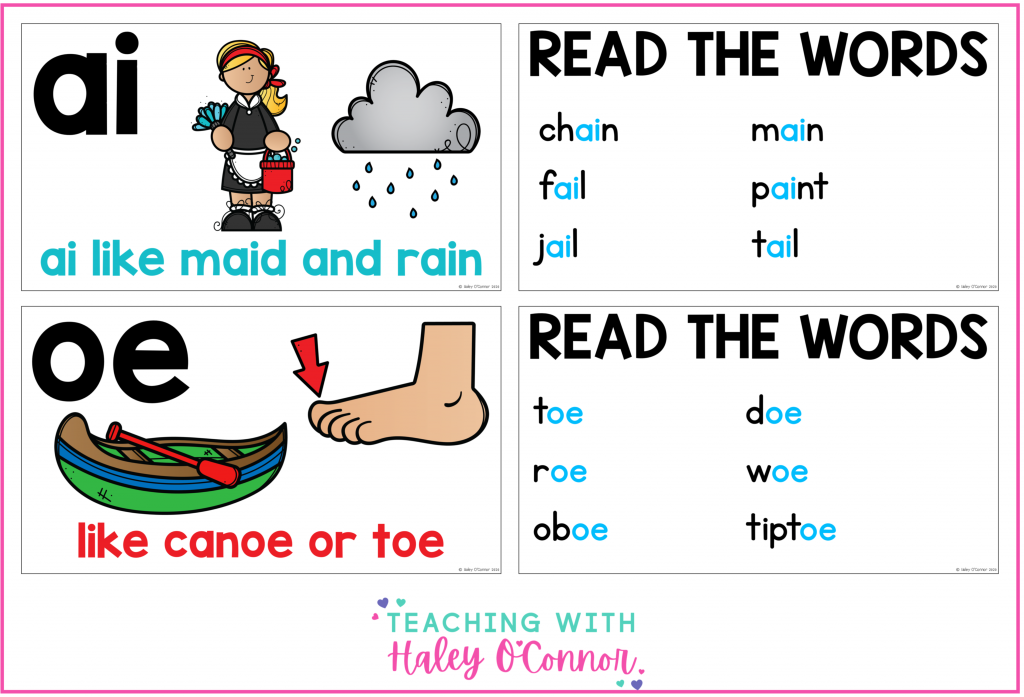
Digital Activities
Before students are ready to work with lots of different words, we want to make sure they have lots of practice reading the words of one vowel team at a time. There are three activities for students to practice the vowel teams individually. I suggest watching one of the videos and then having them complete the activities of the corresponding vowel teams. For example, video 2 covers ai, au, aw and ay. So they would watch those videos and then spend a few days doing activities of JUST those vowel teams. Some of your readers may move much quicker and not need this at all, but we want to make sure we offer it!
If there’s one classic phonics tool, it’s magnetic letter tiles. It is so important that kids are able to manipulate letters and move them around as they learn more about building words. This fun twist has students moving digital letter tiles but the idea is the same! Because the vowel teams is listed and the extra letters, they have all the information they need to build the words. This is a great introductory activity!
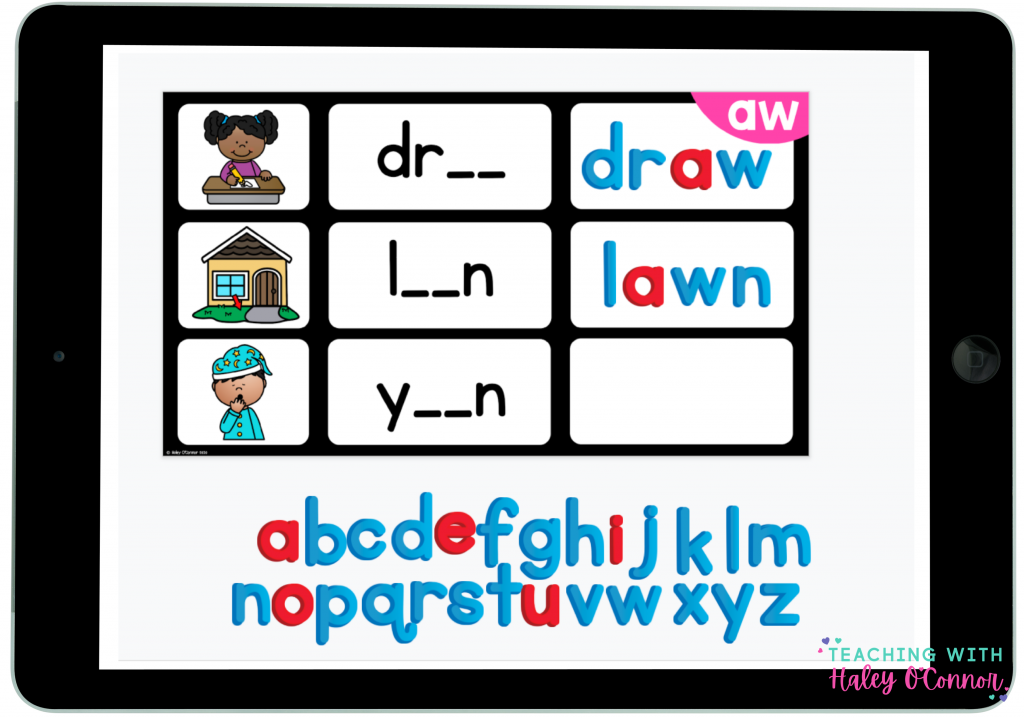
If you want your kids to use real magnetic letters, these are my favorite! (affiliate link).
Another important piece f learning a new phonics pattern is being able to identify it. In this activity, students use the little chips to cover words that include the vowel team or diphthong.
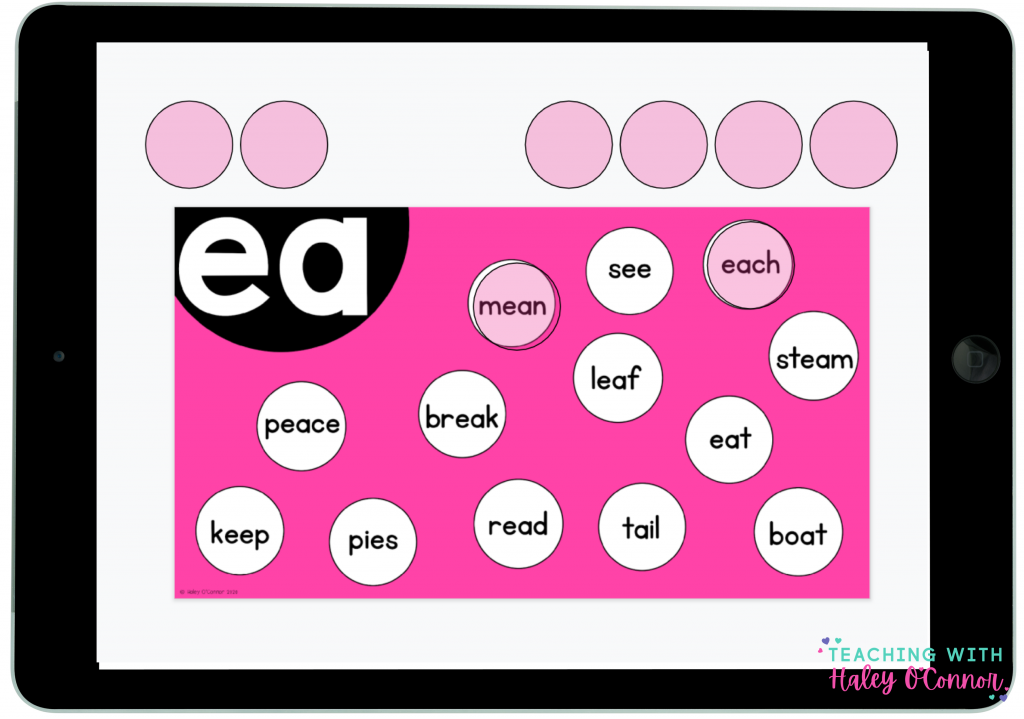
Once students have completed the activity on a tablet or computer, let them complete this activity in “real life.” Choose a vowel team to work on (or even 2-3) and write them all over a piece of paper. Then give them a bingo dauber like this (affiliate link) and let them dab each one! You could also use a crayon or even paint and a cotton ball! If you really need your kid to burn some energy, write the words really big in chalk and have them RUN to the matching words.
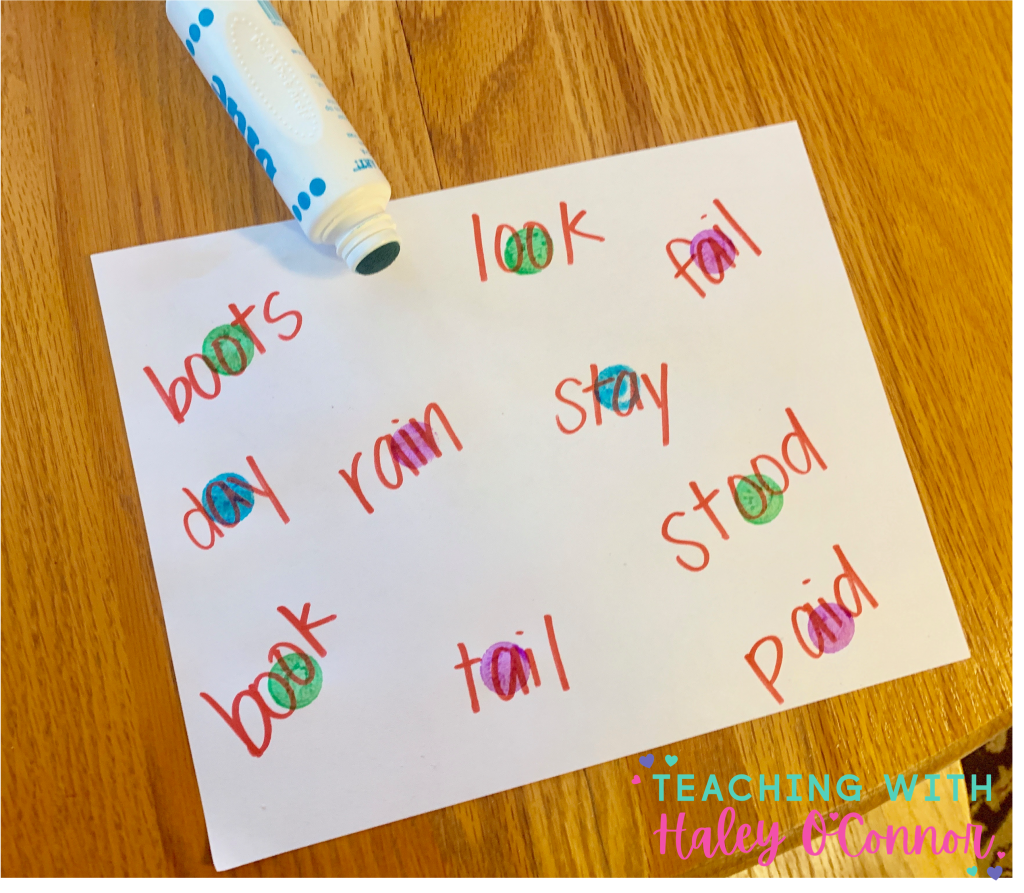
Finally, we want to make sure students see these words in sentences. In this activity, they match the words to a sentence that makes sense.
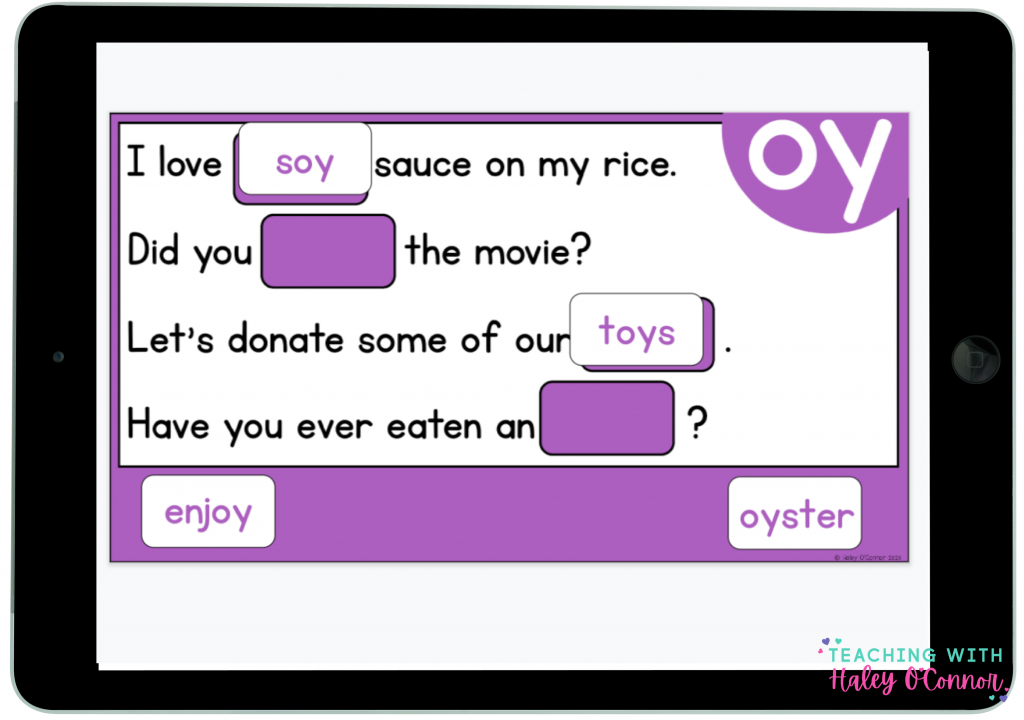
After students have practice with words with only one vowel team, they will be ready to move to groups of words. This is one of my favorite digital activities and super engaging! There are 8 different boards for them to drag the matching words into the picture.
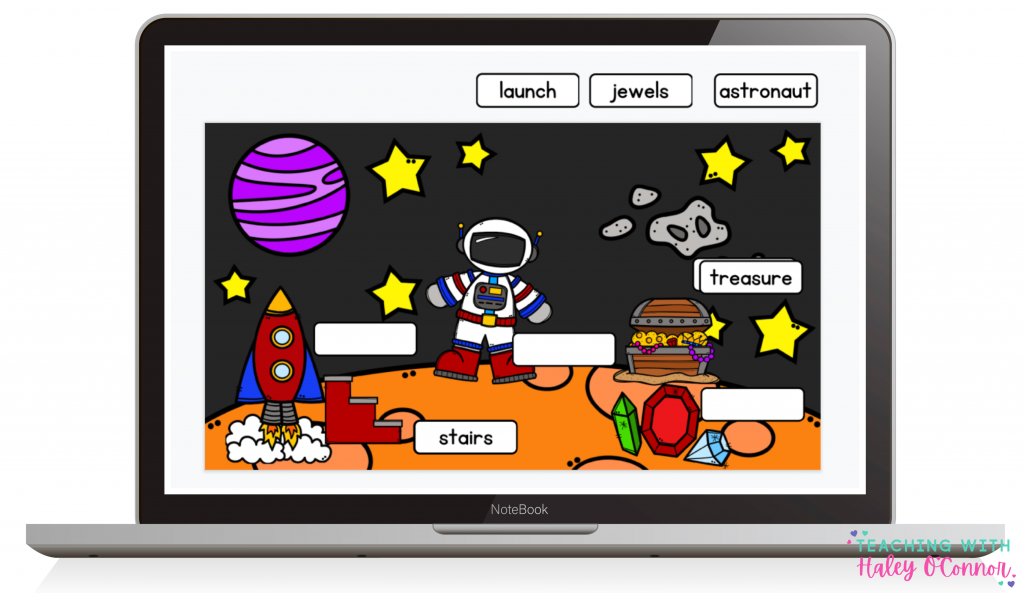
To extend this activity, give your kids a group of words with vowel teams in them. They can all be similar in theme or they can be random words. Then have them draw a picture using all the words and add them in!
For this activity, they will match the vowel teams to fill in the words. This is similar to the first activity, but they are working with 3 different vowel teams.
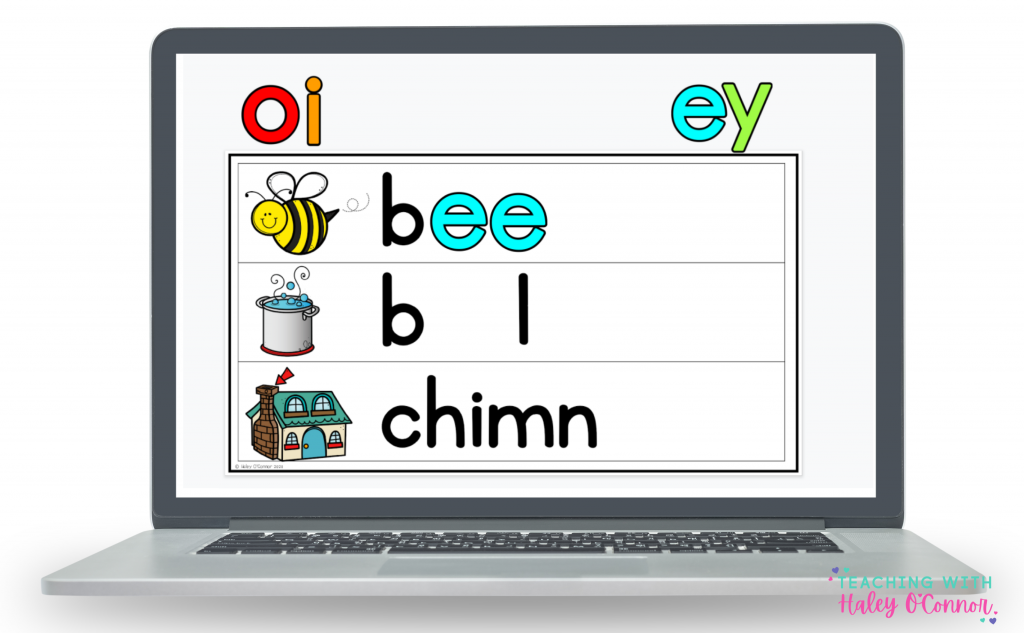
Scrambled Sentences is a favorite activity in my classroom! Instead of having cards in a pocket chart or on the floor, kids will unscramble the words on their table or computer. Then they’ll write the sentence and the words that have vowel teams.
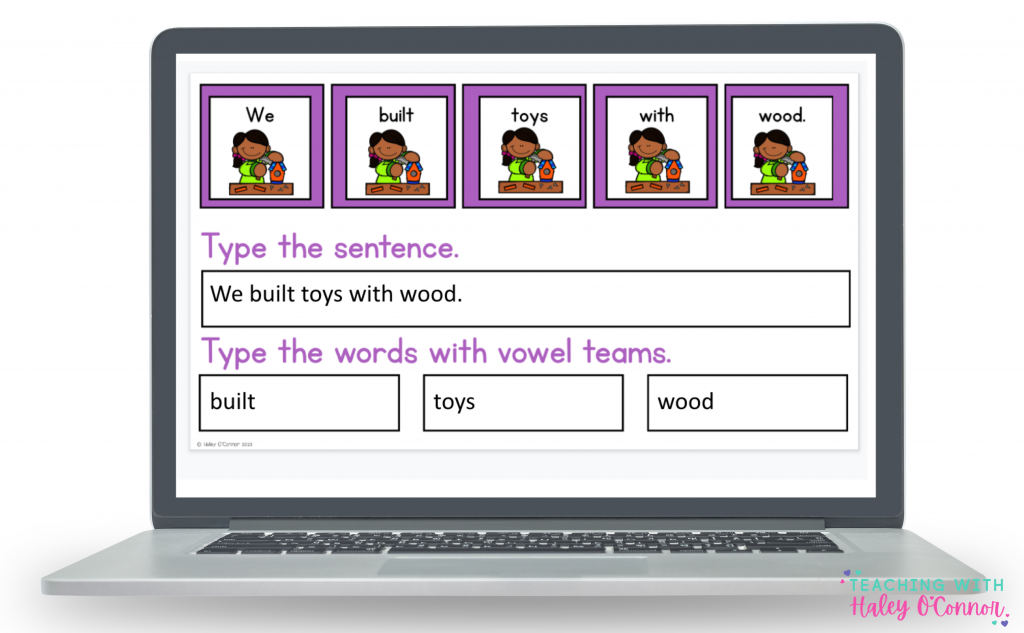
You can easily do this activity with a sheet of paper. Give your kids a word (like bread, each, meet, float, brain) and ask them to use it in a sentence. Then have them cut it up and scramble it so you can unscramble it. They’ll love giving you work!
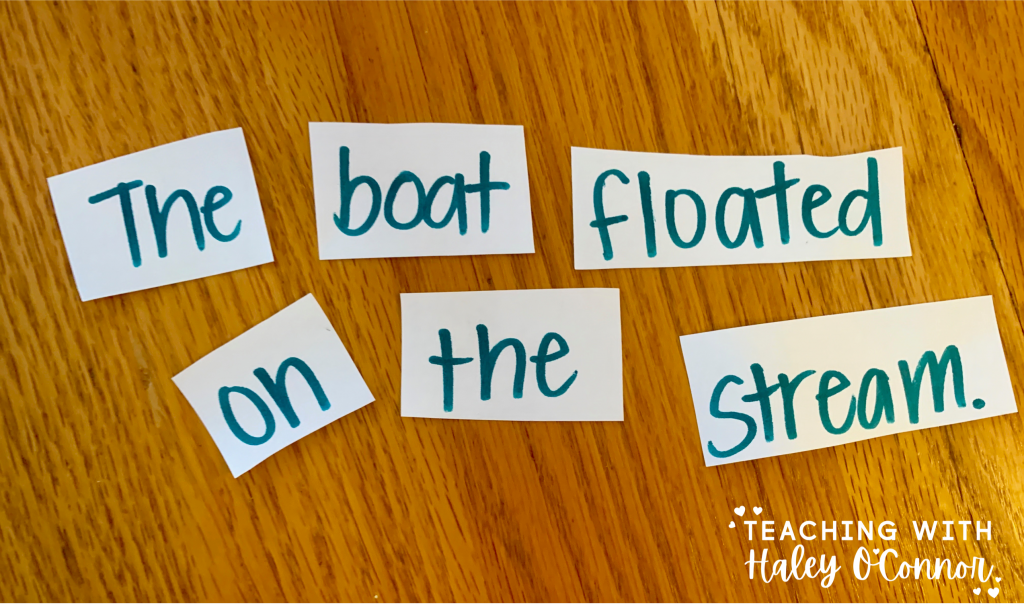
Sorting is so important for our kids. It helps them notice patterns between words and use them on their own. For example, “ai” usually comes in the middle and “ay” usually comes at the end of words.
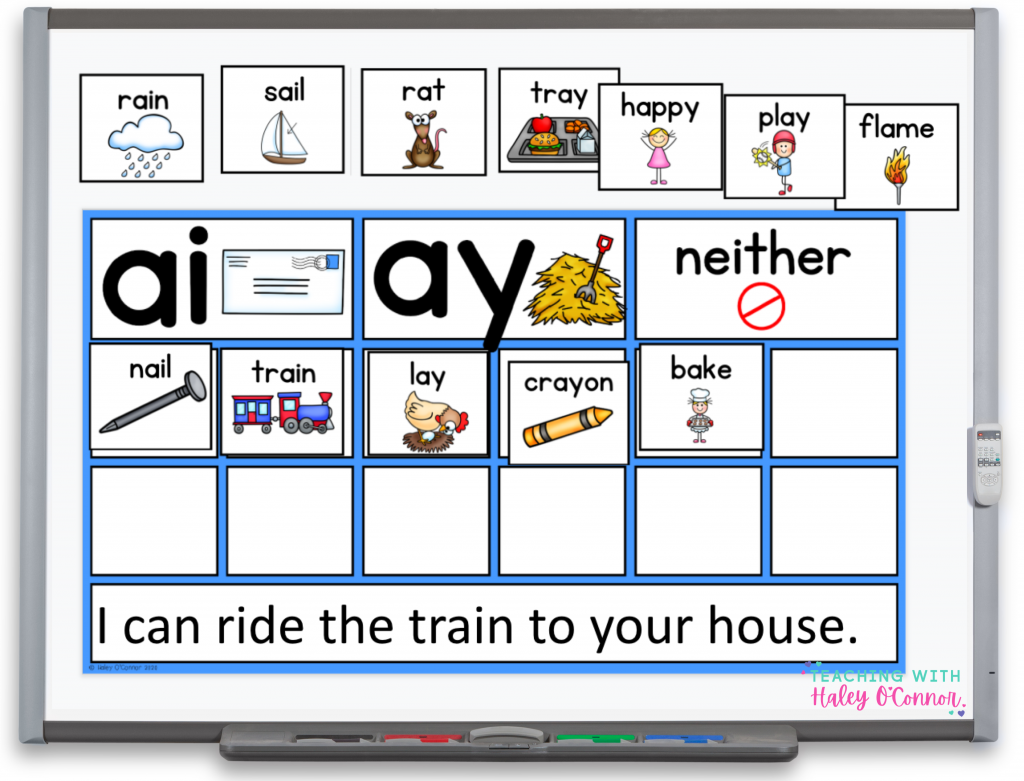
Another sorting activity has students identify real and nonsense words. There are 3 boards for them to use and sort on. This is also a great activity to project on our classroom smartboard!
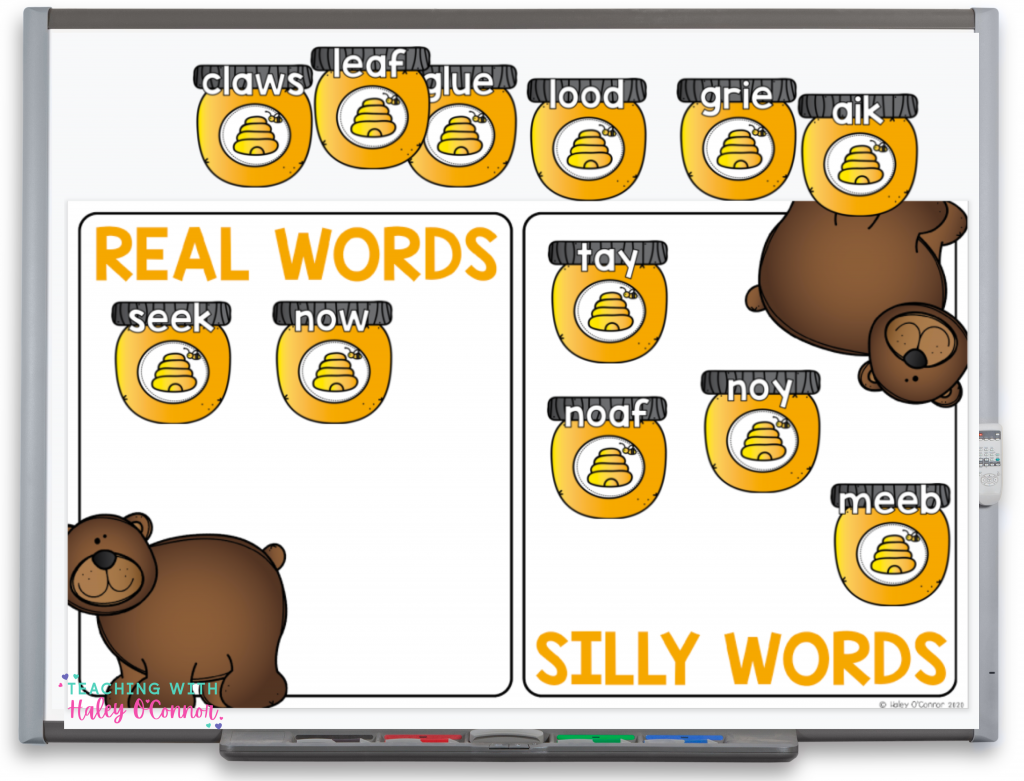
You can do fun sorts around your house or classroom to get everyone moving! Write words on post-its or cards and place them all around the house and give them a recording sheet. Have them write the words as they find them.
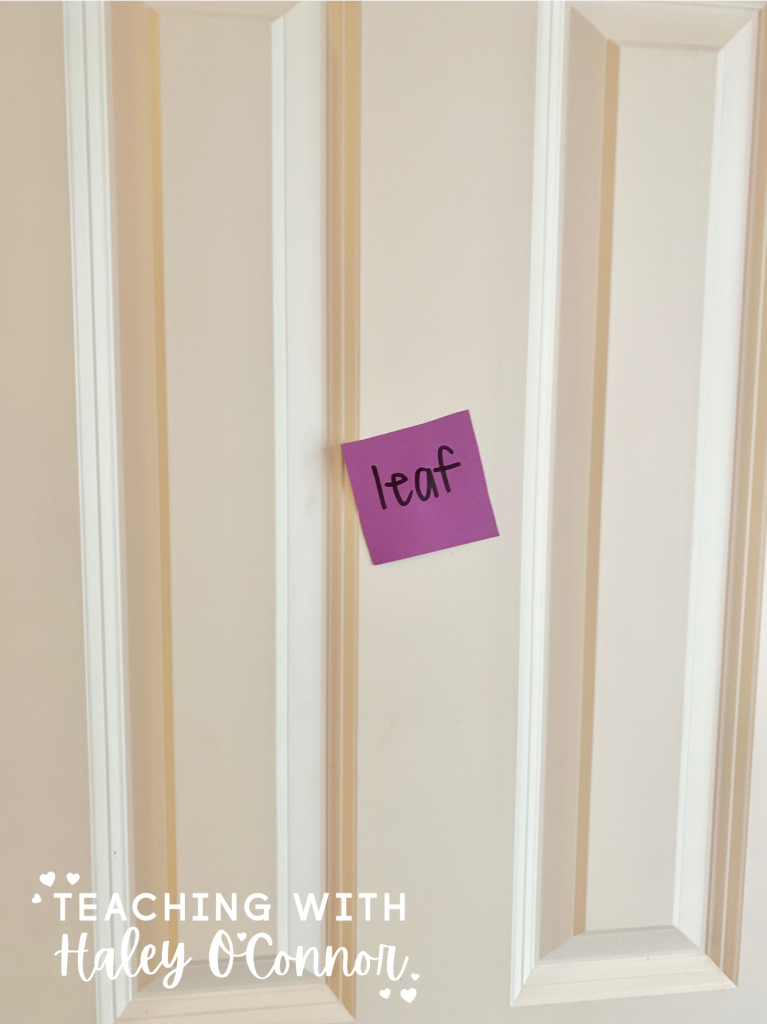
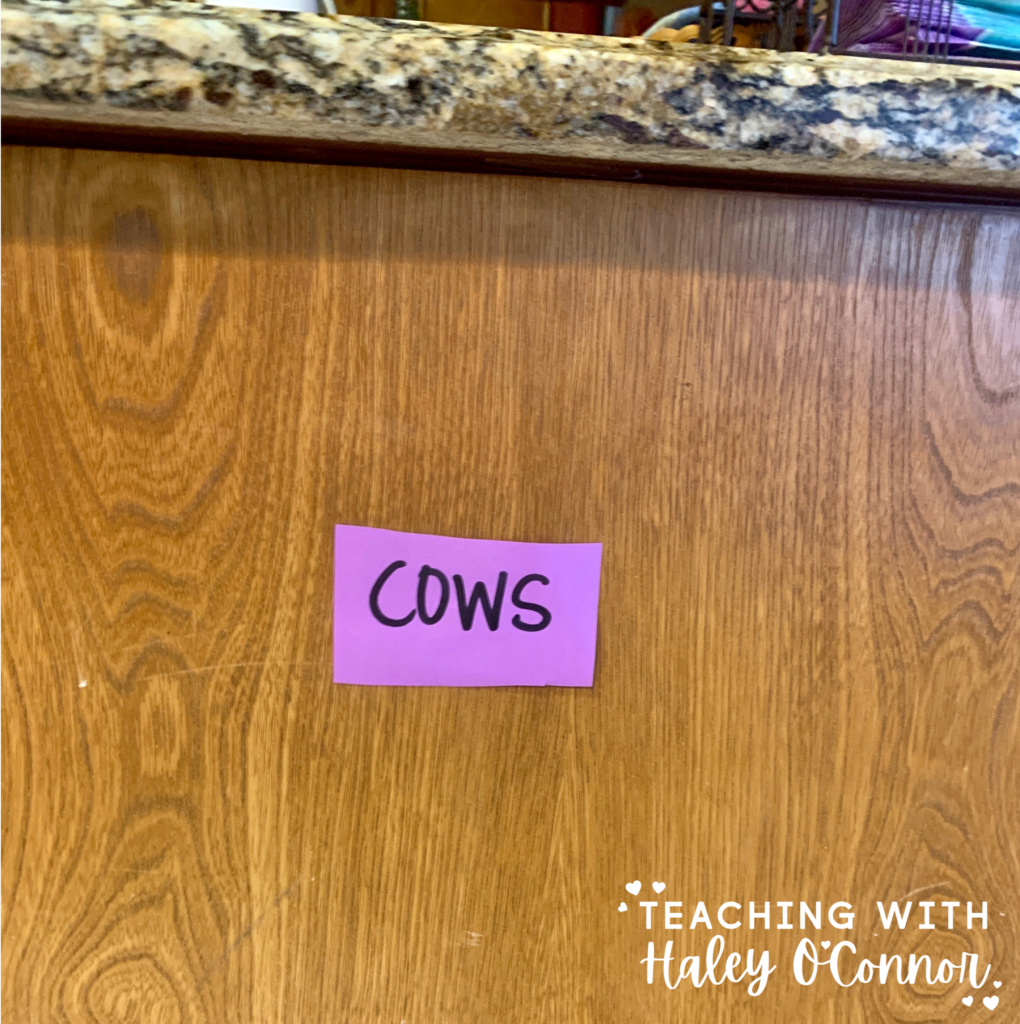
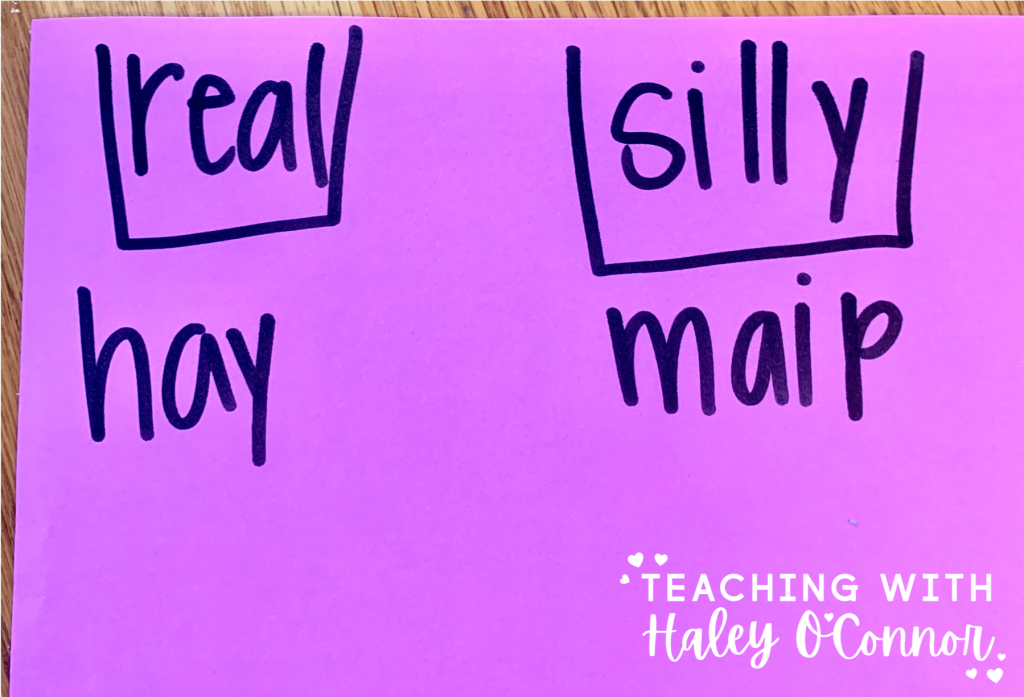
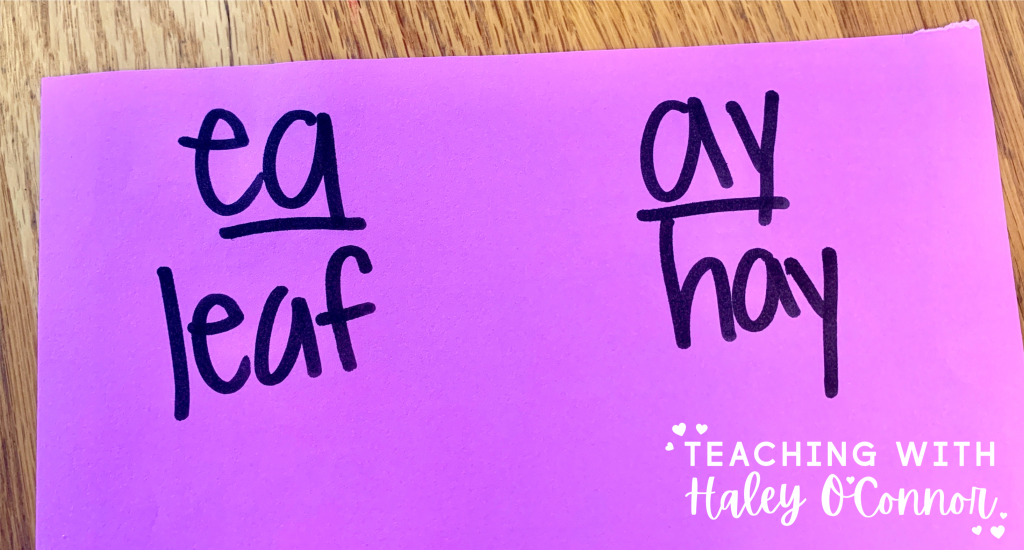
After they have matched and sorted lots of words with vowel teams, they will ready to practice without picture support. For this activity, they’ll pull up a dice on this website or use regular dice. The number they. roll tells them which column to read.
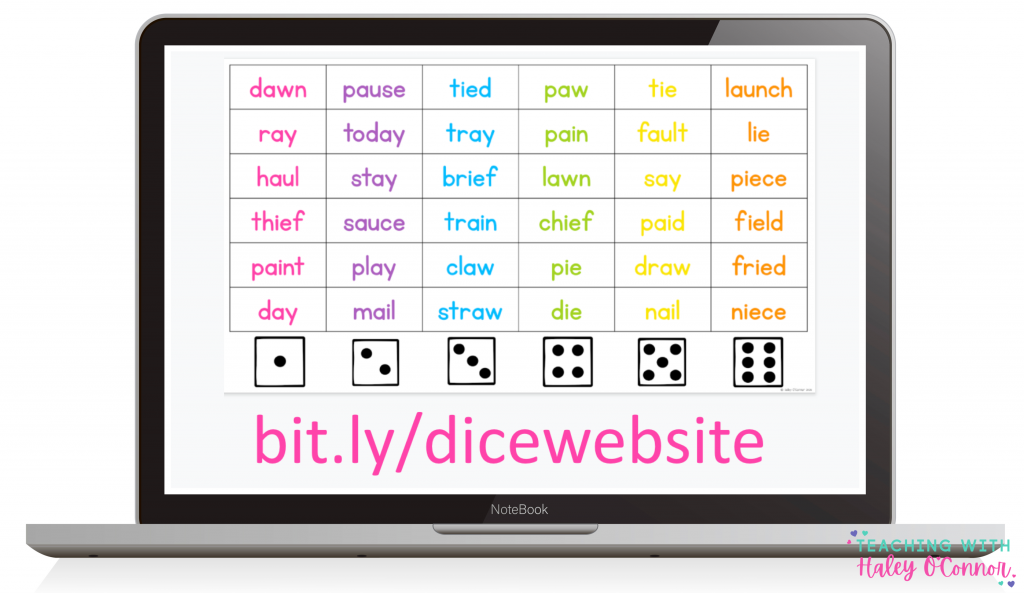
This activity is more challenging because they are not matching…they are spelling the words on their own. After typing the words, they come up with their own sentence for it.

In a classroom setting, this is a great activity to project on your whiteboard. As students find examples of each vowel team in their books, they can add it to the class chart. At home, they can use books, magazines, or even things in their pantry!
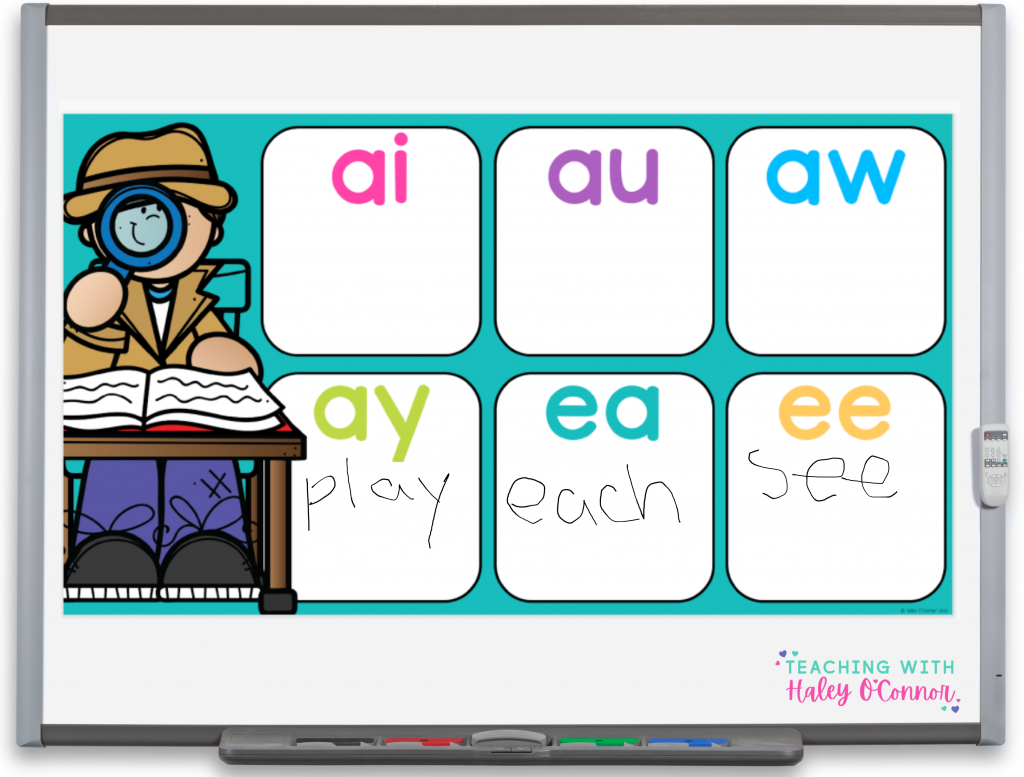
The last activity has students choose the correct spelling of words. While this may seem like an easy activity, it’s actually fairly challenging. This is a skill many kids struggle with on standardized tests and it’s great practice!
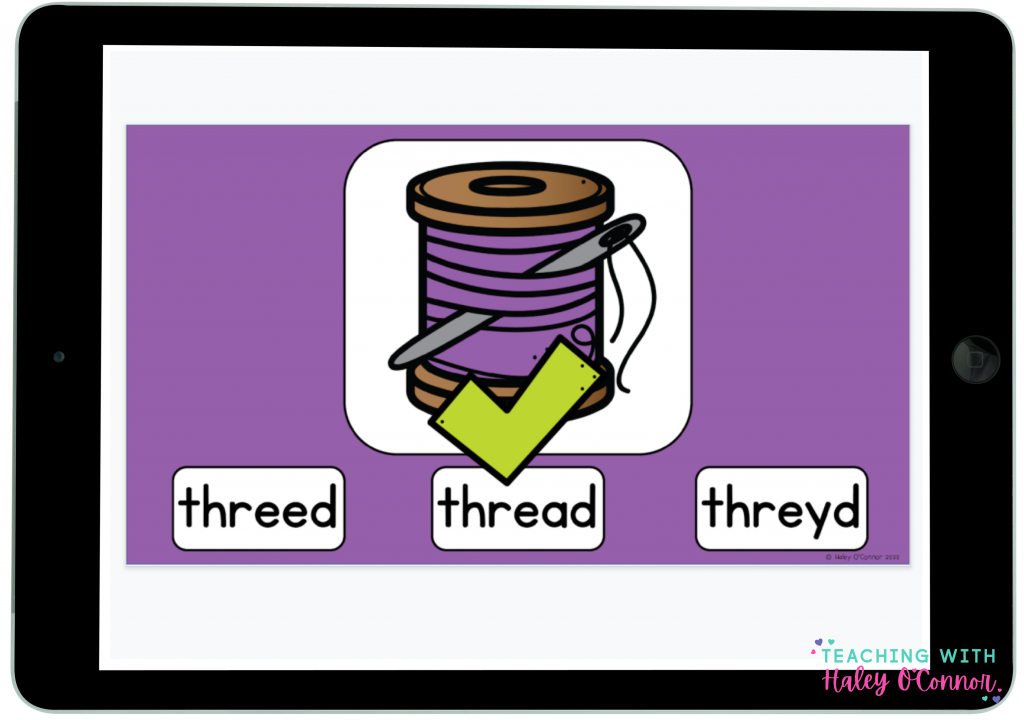
I wanted to share one more fun extension activity for you to do. Pictionary! Write words with vowel teams on slips of paper and fold them up. Have members of the family randomly choose a card and then try to draw the word!
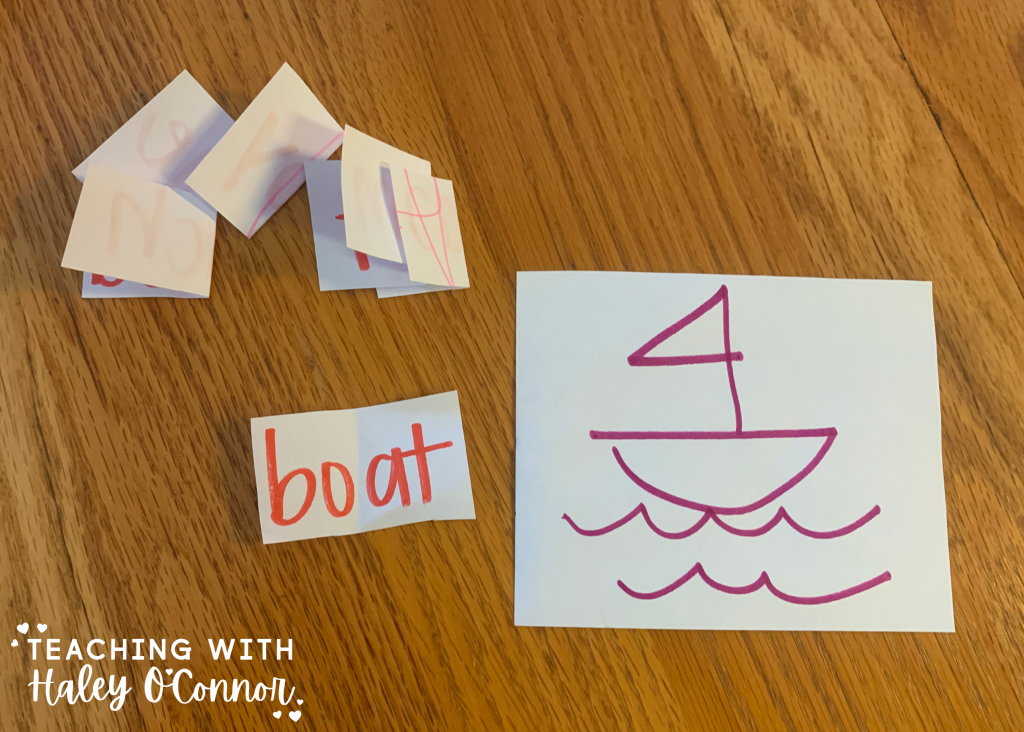
All of these digital activities are compatible with Google Classroom and can be completed on tablets, computers or interactive whiteboards!
Not sure if this resource is right for you? Simply join my email list and get your own copy of Drag and Match! There are 8 boards with 5 words each.
